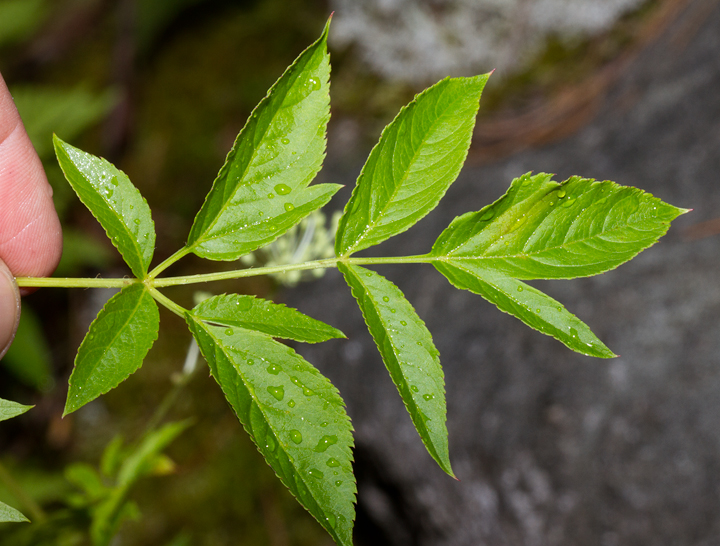Map Snapshot


5 Records
Seasonality Snapshot
Use of media featured on Maryland Biodiversity Project is only permitted with express permission of the photographer.
Post bloom fruit of Bristly Sarsaparilla in Adams Co., Wisconsin (5/27/2009). In Maryland Bristly Sarsaparilla is highly state rare (S1) and is considered endangered.
Media by
Corey Raimond.
Bristly Sarsaparilla at 1000 Acre Heath, Maine (7/7/2013).
Media by
Bill Hubick.
Bristly Sarsaparilla at 1000 Acre Heath, Maine (7/7/2013).
Media by
Bill Hubick.
Bristly Sarsaparilla at 1000 Acre Heath, Maine (7/7/2013).
Media by
Bill Hubick.
Source: Wikipedia
| Aralia hispida | |
|---|---|
| Scientific classification | |
| Kingdom: | Plantae |
| Clade: | Tracheophytes |
| Clade: | Angiosperms |
| Clade: | Eudicots |
| Clade: | Asterids |
| Order: | Apiales |
| Family: | Araliaceae |
| Genus: | Aralia |
| Species: | A. hispida
|
| Binomial name | |
| Aralia hispida | |
Aralia hispida, commonly known as the bristly sarsaparilla, is a member of the family Araliaceae. It can be found in eastern North America from Hudson Bay south to Indiana and from Minnesota east to Newfoundland. It prefers dry and sandy soil, and is a perennial that blooms in June and July. It has a rhizome that can overwinter up to 50 centimetres (20 in) above ground. It has ovate to bipinnately compound leaves with 10 centimetres (3.9 in), serrate, ovate to shield-shaped leaflets on short petioles. Fruits are dark and globose.[1]
References
[edit]- ^ Gleason, Henry A.; Cronquist, Arthur (1991). Manual of Vascular Plants of Northeastern United States and Adjacent Canada (2nd ed.). New York Botanical Garden. ISBN 978-0893273651.



